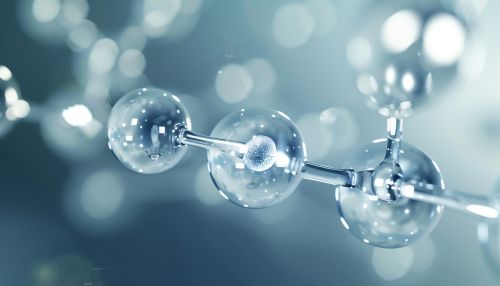Hydrogen bond
Introduction
Hydrogen bonding is a special type of dipole-dipole attraction between molecules, not a covalent bond to a hydrogen atom. It results from the attractive force between a hydrogen atom covalently bonded to a very electronegative atom such as a N, O, or F atom and another very electronegative atom.


Characteristics of Hydrogen Bonds
Hydrogen bonds have certain characteristics that distinguish them from other types of bonds. These include directionality, strong attractive force, and the ability to influence molecular properties.
Directionality
Hydrogen bonds are highly directional and tend to be linear, or nearly so. This directionality, as well as the strength of the hydrogen bond, is responsible for the specific properties of water and proteins.
Strength
The strength of a hydrogen bond depends on the electronegativities of the atoms involved, the distance between them, and the angle of the bond. Hydrogen bonds are generally stronger than van der Waals forces, but weaker than covalent or ionic bonds.
Influence on Molecular Properties
Hydrogen bonds can significantly influence the properties of the molecules they are part of. For example, they are responsible for the high boiling point of water compared to other molecules of similar size.
Types of Hydrogen Bonds
There are two main types of hydrogen bonds: intermolecular and intramolecular hydrogen bonds.
Intermolecular Hydrogen Bonds
Intermolecular hydrogen bonds occur between separate molecules. These bonds can occur between any number of molecules as long as the necessary atoms are present. For example, the hydrogen bonds in water are intermolecular because they occur between separate water molecules.
Intramolecular Hydrogen Bonds
Intramolecular hydrogen bonds occur within a single molecule. These bonds can have significant effects on the shape and properties of the molecule. For example, they are crucial in determining the three-dimensional structures of proteins and nucleic acids in biology.
Role in Biological Systems
Hydrogen bonds play a crucial role in biological systems. They are responsible for the unique properties of water, which is essential to life. They also play a key role in the structure and function of proteins and nucleic acids.
In Water
In water, hydrogen bonds are responsible for many of the unique properties that make water so vital to life. These include its high specific heat, its ability to dissolve many substances, and its unusual behavior when it freezes.
In Proteins and Nucleic Acids
Hydrogen bonds are crucial in maintaining the structure of proteins and nucleic acids. In proteins, they help to stabilize the secondary, tertiary, and quaternary structures. In nucleic acids, they are responsible for the base pairing in DNA and RNA.
Hydrogen Bonding in Chemistry
In chemistry, hydrogen bonding is a key factor in determining the properties and reactions of many compounds. It plays a role in the behavior of solutions, the structures of polymers, and the mechanisms of chemical reactions.
In Solutions
Hydrogen bonding can greatly affect the properties of solutions. For example, it is responsible for the high boiling points and low vapor pressures of many solvents.
In Polymers
Hydrogen bonding plays a key role in the structures of polymers. For example, it is responsible for the high tensile strength of nylon and silk.
In Chemical Reactions
Hydrogen bonding can also influence the mechanisms of chemical reactions. For example, it can stabilize transition states and intermediates, affecting the rates and outcomes of reactions.
